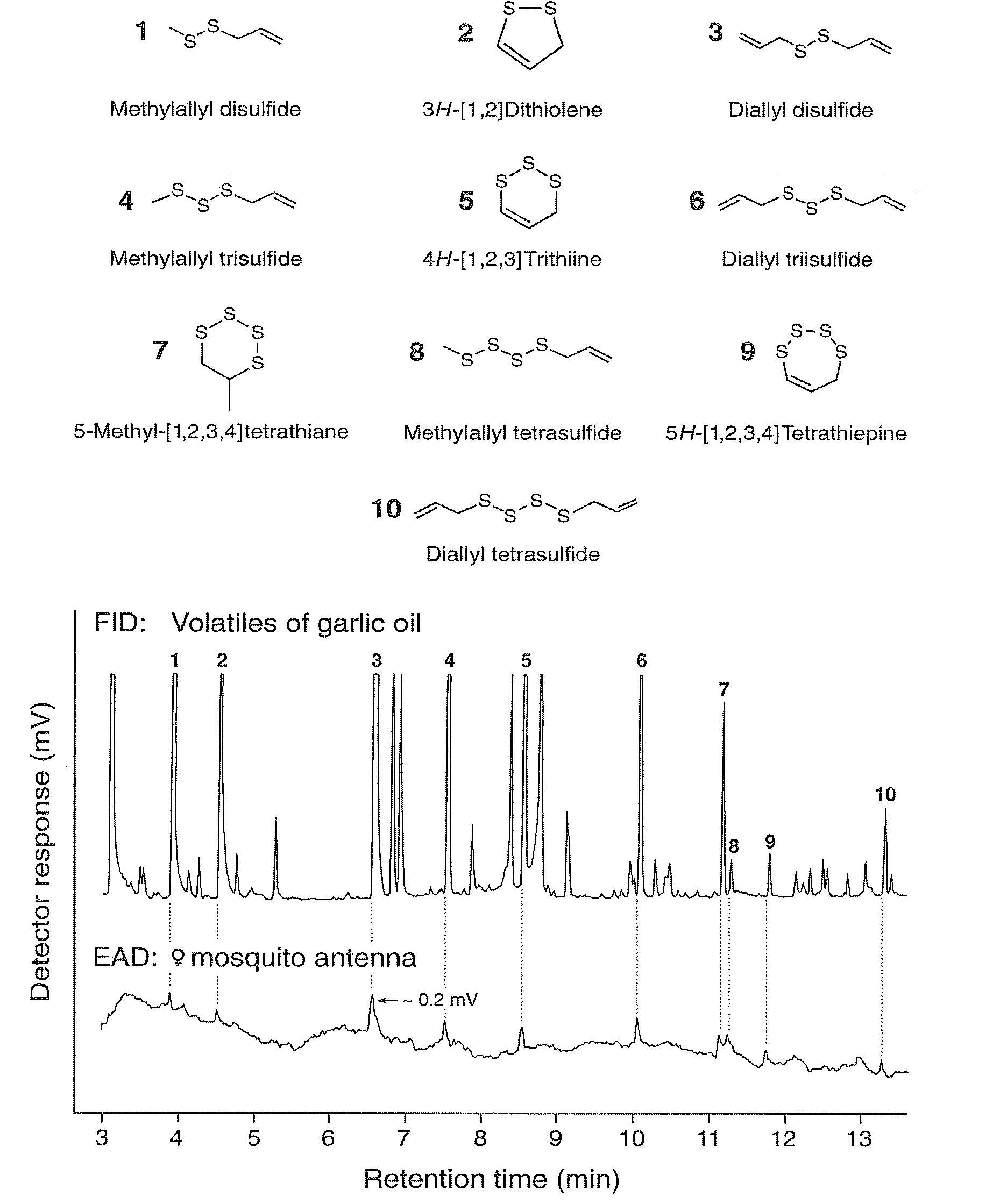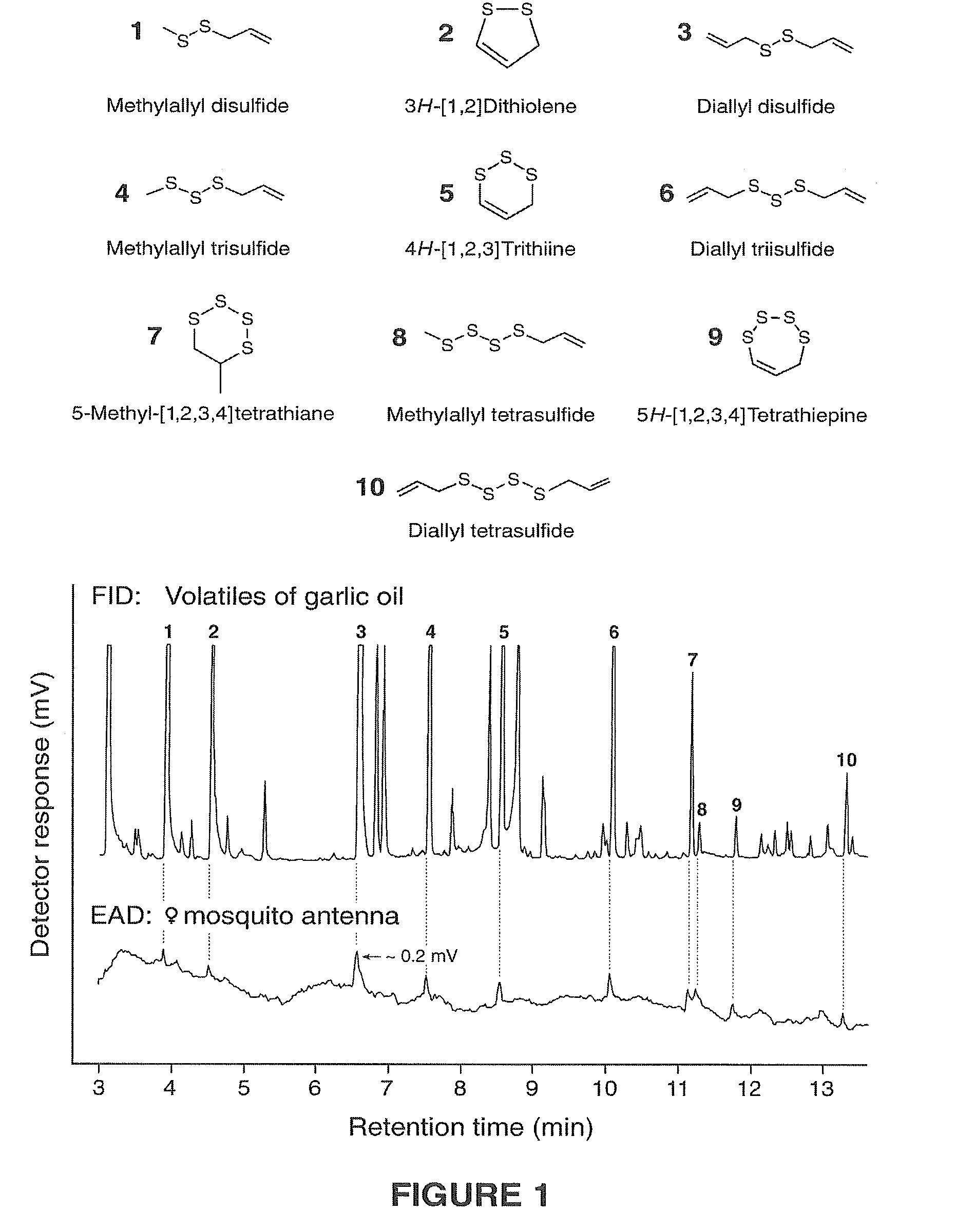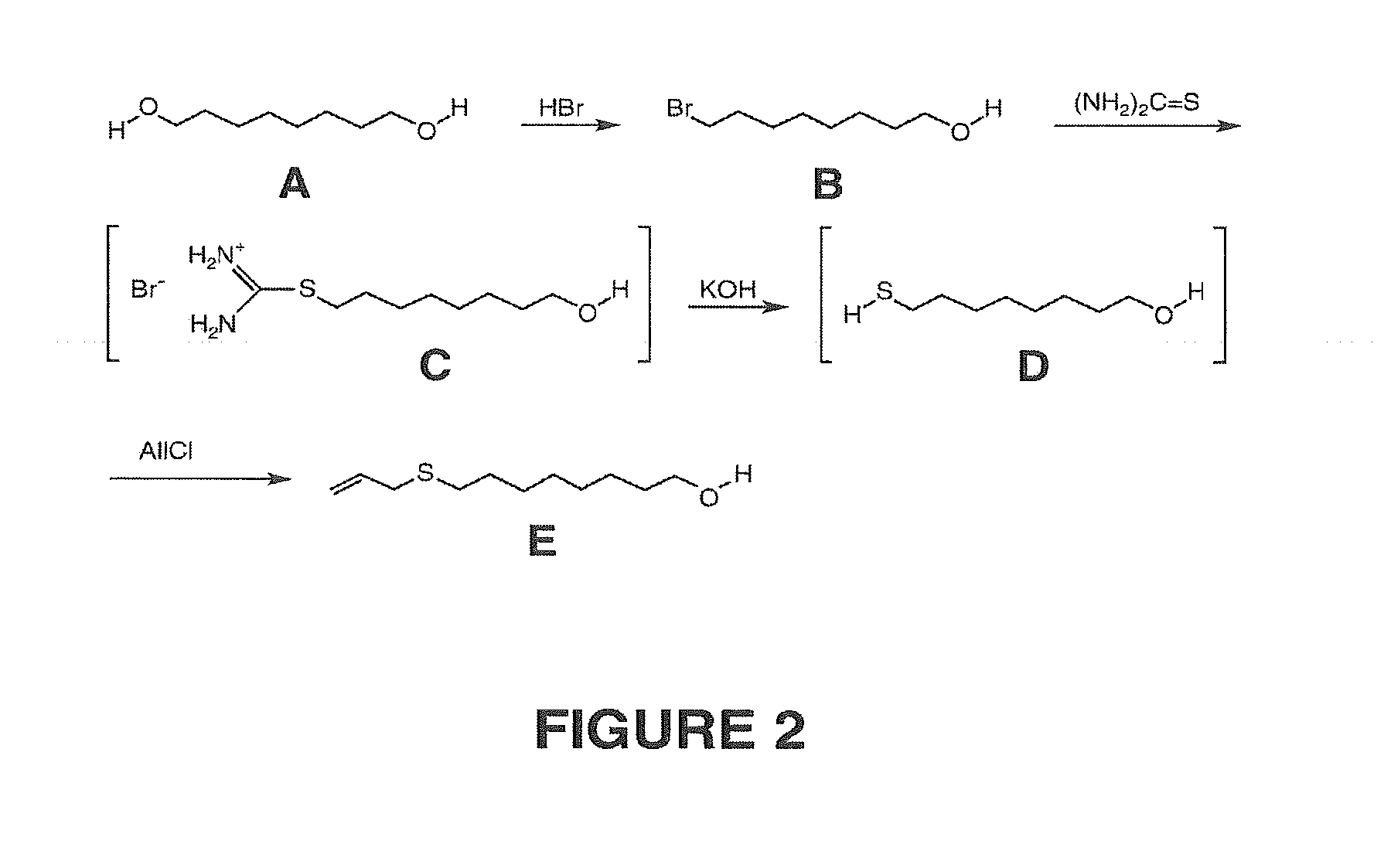Compounds, compositions and methods for repelling blood-feeding arthropods and deterring their landing and feeding
- Summary
- Abstract
- Description
- Claims
- Application Information
AI Technical Summary
Benefits of technology
Problems solved by technology
Method used
Image
Examples
example 1
Experimental insects
[0035]The black-eyed Liverpool strain of Aedes. aegyti was obtained from Dr. Carl Lowenberger, Simon Fraser University (SFU). Insects were reared under standardized conditions (60-70% relative humidity, 26-28° C., 14 h light: 10 h dark photoperiod) in SFU's insectary. Neonate larvae that hatched in glass dishes of sterilized hypoxic water were transferred to trays of distilled water provisioned with Nutrafin® Basix Staple Food fish diet. Pupae were collected daily and separated by sex, and 15 females and 10 males were placed in a paper cup (7.5 cm diameter, 8.5 cm high) with a mesh lid. Emergent adults were fed a 10% (w / v) sucrose solution via braided cotton dental rolls. Arm-fed gravid females were offered water-containing paper cups, lined with paper-towel as an oviposition substrate.
[0036]The Ifakara strain of Anopheles gambiae was obtained from Dr. Bernard Roitberg, SFU. Insects were reared under standardized conditions (see above) in SFU's insectary. Neonate...
example 2
General Bioassay Procedure
[0038]Candidate repellents and deterrents were bioassayed according to a modified protocol from the World Health Organization (1996). At least 1 hour prior to each bioassay, 75 host-seeking non blood-fed, nulliparous, 5- to 8-day-old female Aedes aegypti, Anopheles gambiae or Culex quinquefasciatus were placed into a wood-framed cage (26.5 cm on each side and 42.5 cm high) with a wooden floor, screened mesh sides and top, and a clear acrylic front fitted with a cotton stockinette sleeve (10 cm diameter). The test subject's arm was covered with an elbow-length polyethylene glove with an excised patch (16.6 cm long, 6 cm wide) to expose the ventral forearm of the test subject. Candidate deterrents were formulated in mineral (paraffin) oil and applied to the exposed forearm 5 min prior to inserting the arm into the cage. The inserted arm remained in the cage for 3 min every 30 min. Prior to each 3-min bioassay period, the hand of the untreated arm was inserted...
example 3
Repellence and Deterrence of Garlic Oil and Identification of Bioactive Ingredients
[0041]Garlic oil (Allium sativum—Mexico; Clearwater Soap Works, Box 1775 RR1, Clearwater, BC V0E 1N0, Canada) was formulated in mineral oil and tested using the general bioassay procedure described in EXAMPLE 2 at a dose of 0.1 mg per cm2 of arm surface. It expressed repellence and deterrence for ˜30 min.
[0042]Aliquots of garlic oil extracts were then subjected to coupled gas chromatographic-electroantennographic detection (GC-EAD) analysis. Fourteen components (10 shown in FIG. 1) elicited responses from female or male mosquito antennae. Some of these components were isolated by high-performance liquid chromatography (HPLC) for identification by nuclear magnetic resonance spectroscopy (NMR). Other components were identified (compounds 11-14 in TABLE 2) by coupled GC-mass spectrometry and by retention index calculations. Assignment of molecular structure for an antennal stimulatory constituent was con...
PUM
| Property | Measurement | Unit |
|---|---|---|
| Time | aaaaa | aaaaa |
| Time | aaaaa | aaaaa |
| Mass | aaaaa | aaaaa |
Abstract
Description
Claims
Application Information
 Login to View More
Login to View More - R&D
- Intellectual Property
- Life Sciences
- Materials
- Tech Scout
- Unparalleled Data Quality
- Higher Quality Content
- 60% Fewer Hallucinations
Browse by: Latest US Patents, China's latest patents, Technical Efficacy Thesaurus, Application Domain, Technology Topic, Popular Technical Reports.
© 2025 PatSnap. All rights reserved.Legal|Privacy policy|Modern Slavery Act Transparency Statement|Sitemap|About US| Contact US: help@patsnap.com



